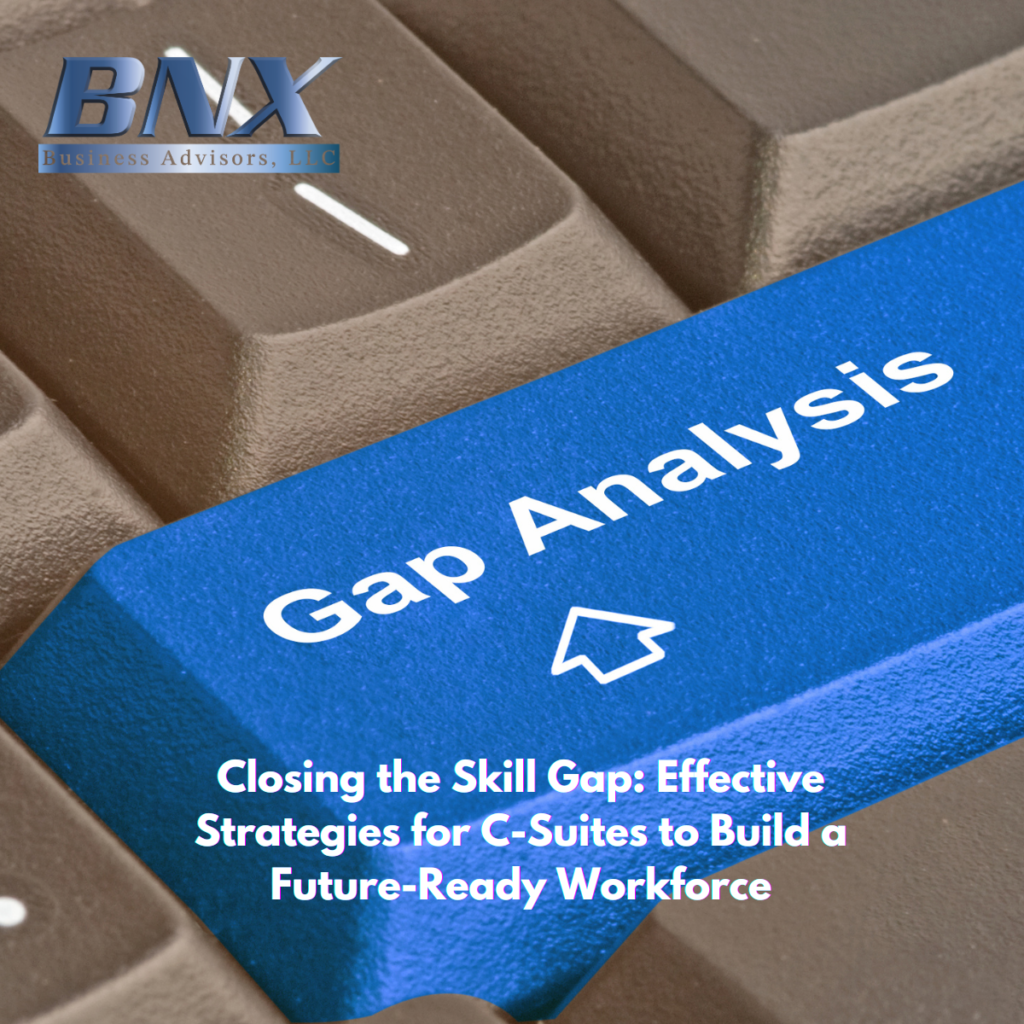

Table of Contents
Understanding the Skill Gap and Its Impact on Organizations
In today’s fast-paced business landscape, skill gaps have become a pressing issue for organizations striving to maintain a competitive edge. Studies show that over 70% of C-suite leaders believe that skill gaps within their teams negatively impact their organization’s overall performance and growth. The challenge for business leaders is clear: to close the skill gap and ensure their workforce has the capabilities needed to drive innovation, productivity, and resilience in the face of change.
Building a future-ready workforce requires a strategic approach to workforce development, from upskilling and reskilling initiatives to fostering a learning culture that promotes adaptability. This blog explores practical strategies for closing the skill gap and equipping teams with the tools they need to meet evolving industry demands.
Identifying and Analyzing Skill Gaps
The first step in closing the skill gap is to identify and analyze where the gaps exist within the organization. Skill gaps can be industry-specific or reflect emerging needs due to technological advancements or market trends.
Conducting Skills Assessments: HR teams can collaborate with department heads to assess current employee skills and identify areas for improvement. Tools such as competency frameworks and skills assessments can provide insights into existing skill gaps.
Engaging in Workforce Planning: Workforce planning enables organizations to anticipate future skill needs based on business objectives. By aligning workforce needs with strategic goals, C-suite leaders can make proactive decisions to bridge gaps.
Analyzing Industry Trends: An understanding of industry trends, such as digital transformation or AI, can highlight the skills that will be critical for future success. This allows leadership to plan targeted training and hiring efforts.
Upskilling and Reskilling Programs
To close the skill gap, organizations must focus on developing both current employees and new hires. Upskilling and reskilling programs are essential for building competencies that align with the company’s evolving needs.
Creating Tailored Training Programs: Tailored programs that focus on specific skill areas—such as data analysis, project management, or leadership—ensure that employees develop relevant skills.
Incorporating Digital and Technical Skills: As digital skills become more critical across industries, organizations must prioritize digital literacy, coding, and data-related skills to future-proof their workforce.
Promoting Cross-Functional Training: Encouraging employees to gain knowledge in different areas helps create a versatile workforce, enabling the company to respond more flexibly to changes.
Developing a Learning Culture for Continuous Improvement
Closing the skill gap isn’t a one-time effort; it requires a long-term commitment to continuous learning. Fostering a learning culture encourages employees to pursue professional growth and develop new skills.
Creating Incentives for Learning: Incentivizing employees to pursue skill development—through rewards, recognition, or career advancement opportunities—helps build engagement in learning initiatives.
Implementing a Learning Management System (LMS): An LMS enables organizations to deliver scalable training programs that employees can access at their convenience, making learning accessible.
Encouraging Mentorship Programs: Mentorships allow employees to learn from experienced colleagues, facilitating knowledge transfer and expanding skills beyond traditional training programs.
Leveraging Partnerships for Skill Development
Collaborations with educational institutions, industry organizations, and online learning platforms can enhance an organization’s ability to close skill gaps effectively.
Partnering with Universities and Training Providers: Many companies work with universities or specialized training providers to offer courses that align with the organization’s needs.
Exploring Apprenticeships and Internships: These programs provide hands-on learning opportunities and can serve as a pipeline for acquiring skilled talent.
Utilizing Online Platforms for Flexible Learning: Platforms like Coursera, LinkedIn Learning, and edX allow employees to learn at their own pace, offering courses on emerging skills and technologies.
Conclusion: Building a Future-Ready Workforce
In the face of evolving challenges, a skilled workforce is an organization’s greatest asset. By identifying skill gaps, investing in continuous learning, and partnering with educational providers, C-suite leaders can empower their teams to adapt to new demands. Building a future-ready workforce is not just about filling today’s skill gaps but equipping employees to thrive in the years to come.
📌 If you need to know more, you can contact us directly and visit our website
Email: YaraB@BNXBA.com
Website: www.BNXBA.com
